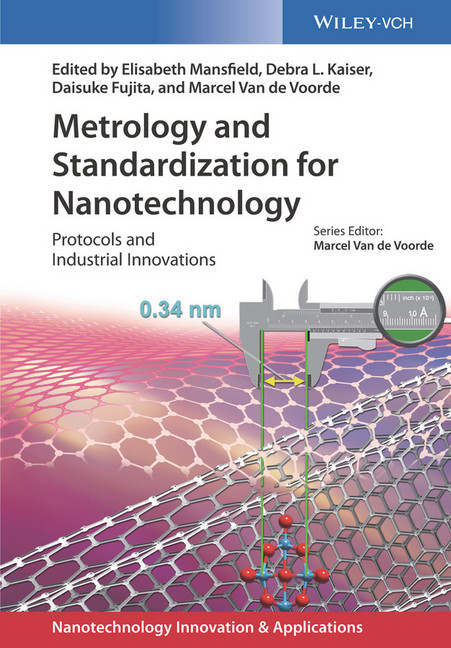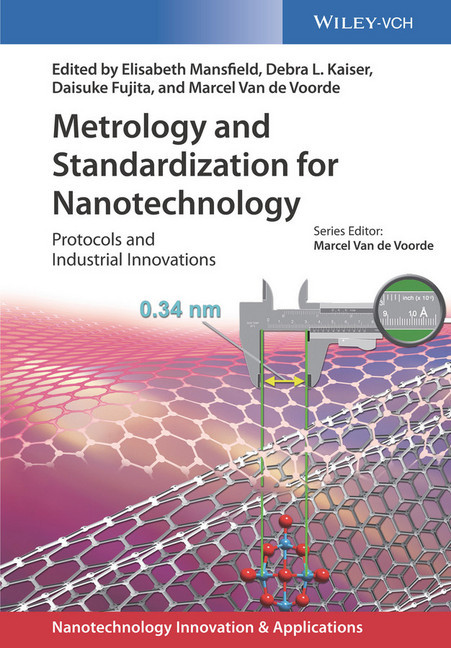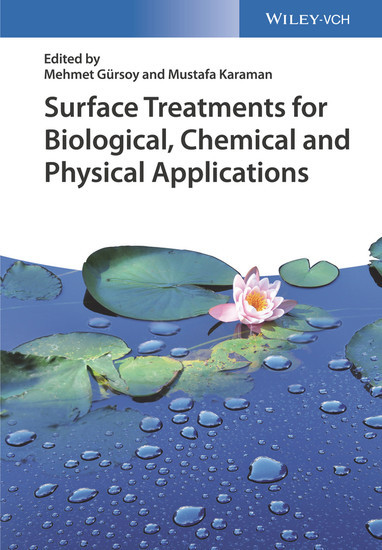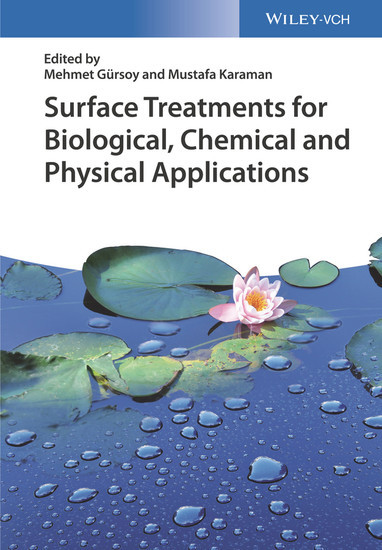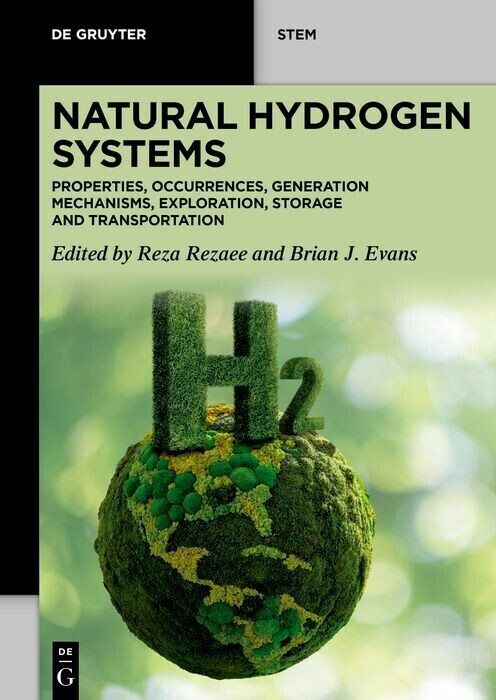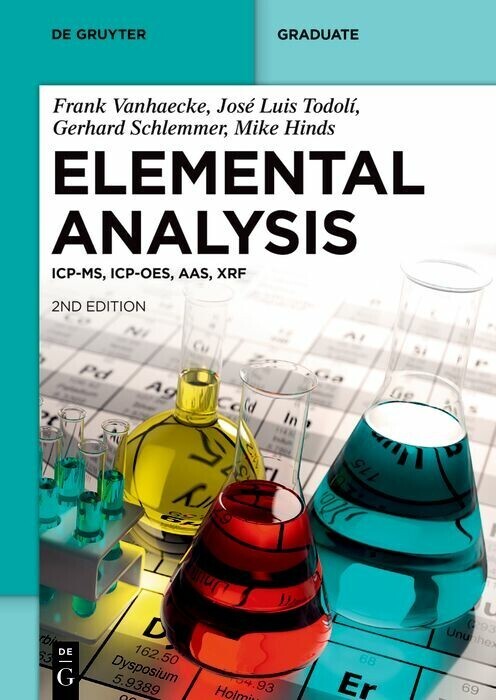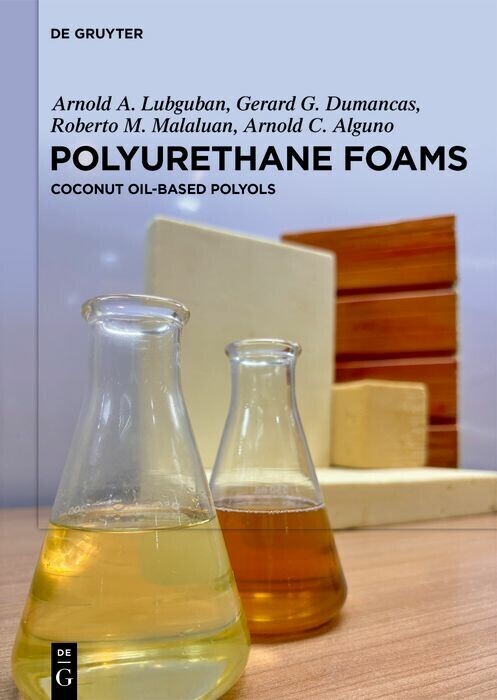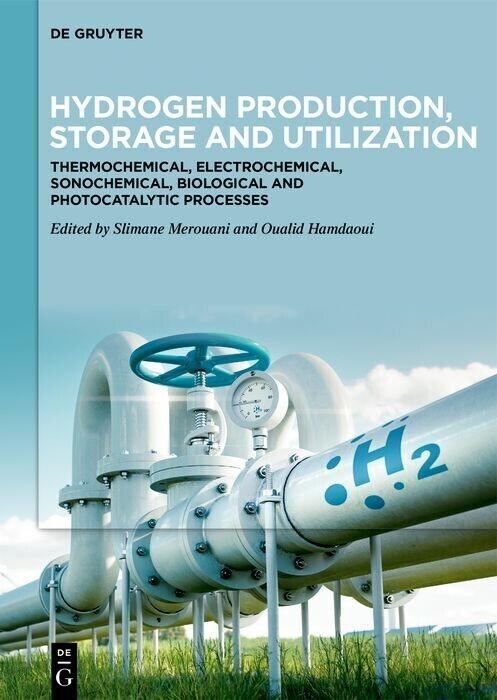Metrology and Standardization for Nanotechnology
Protocols and Industrial Innovations
For the promotion of global trading and the reduction of potential risks, the role of international standardization of nanotechnologies has become more and more important. This book gives an overview of the current status of nanotechnology including the importance of metrology and characterization at the nanoscale, international standardization of nanotechnology, and industrial innovation of nano-enabled products.
First the field of nanometrology, nanomaterial standardization and nanomaterial innovation is introduced. Second, major concepts in analytical measurements are given in order to provide a basis for the reliable and reproducible characterization of nanomaterials. The role of standards organizations are presented and finally, an overview of risk management and the commercial impact of metrology and standardization for industrial innovations.
Elisabeth Mansfield is research chemist at the National Institute of Standards and Technology (NIST) in Boulder, Colorado, USA. She obtained her PhD in analytical chemistry from the University of Arizona in Tucson, USA. During her career at NIST, she received both the Bronze and Silver Medal of the Department of Commerce/NIST for extending thermogravimetric analysis to the microscale and for pioneering work on carbon nanotube purification and analysis. Elisabeth Mansfield is member of various standards committees, among them the ASTM committee on thermal analysis and the ISO committee on nanoparticles.
Debra L. Kaiser is a Technical Program Director in the Material Measurement Laboratory at NIST in Gaithersburg, Maryland, USA. She obtained her ScD in Materials Science and Engineering from the Massachusetts Institute of Technology (MIT). She worked as a postdoctoral fellow and consultant at the IBM Research Center in Yorktown Heights, New York, before joining NIST. After a productive research and management career, she now holds the position of Technical Program Director of the NIST Nanotechnology Environment, Health, and Safety Program. She is vice-chairman of ASTM International Committee E56 on Nanotechnology.
Daisuke Fujita is the Executive Vice President of the National Institute for Materials Science (NIMS) in Tsukuba, Japan. He obtained his MSc and PhD degrees in materials science and engineering from the University of Tokyo. Daisuke Fujita was senior researcher at the National Institute for Metals (NRIM) before joining NIMS as group leader in 2001. Subsequently he became Associate Director of the Nanomaterials Laboratory at NIMS, Managing Director of the Advanced Nano Characterization Center, Coordinating Director of the Key Nanotechnologies Division, and Director of the Advanced Key Technologies Division before assuming his current responsibilities
Marcel Van de Voorde has 40 years` experience in European Research Organisations including CERN-Geneva, European Commission, with 10 years at the Max Planck Institute in Stuttgart, Germany. For many years, he was involved in research and research strategies, policy and management, especially in European research institutions. He holds a Professorship at the University of Technology in Delft, the Netherlands, as well as multiple visiting professorships in Europe and worldwide. He holds a doctor honoris causa and various honorary Professorships.
He is senator of the European Academy for Sciences and Arts, in Salzburg and Fellow of the World Academy for Sciences. He is a Fellow of various scientific societies and has been decorated by the Belgian King. He has authored of multiple scientific and technical publications and co-edited multiple books in the field of nanoscience and nanotechnology.
First the field of nanometrology, nanomaterial standardization and nanomaterial innovation is introduced. Second, major concepts in analytical measurements are given in order to provide a basis for the reliable and reproducible characterization of nanomaterials. The role of standards organizations are presented and finally, an overview of risk management and the commercial impact of metrology and standardization for industrial innovations.
Elisabeth Mansfield is research chemist at the National Institute of Standards and Technology (NIST) in Boulder, Colorado, USA. She obtained her PhD in analytical chemistry from the University of Arizona in Tucson, USA. During her career at NIST, she received both the Bronze and Silver Medal of the Department of Commerce/NIST for extending thermogravimetric analysis to the microscale and for pioneering work on carbon nanotube purification and analysis. Elisabeth Mansfield is member of various standards committees, among them the ASTM committee on thermal analysis and the ISO committee on nanoparticles.
Debra L. Kaiser is a Technical Program Director in the Material Measurement Laboratory at NIST in Gaithersburg, Maryland, USA. She obtained her ScD in Materials Science and Engineering from the Massachusetts Institute of Technology (MIT). She worked as a postdoctoral fellow and consultant at the IBM Research Center in Yorktown Heights, New York, before joining NIST. After a productive research and management career, she now holds the position of Technical Program Director of the NIST Nanotechnology Environment, Health, and Safety Program. She is vice-chairman of ASTM International Committee E56 on Nanotechnology.
Daisuke Fujita is the Executive Vice President of the National Institute for Materials Science (NIMS) in Tsukuba, Japan. He obtained his MSc and PhD degrees in materials science and engineering from the University of Tokyo. Daisuke Fujita was senior researcher at the National Institute for Metals (NRIM) before joining NIMS as group leader in 2001. Subsequently he became Associate Director of the Nanomaterials Laboratory at NIMS, Managing Director of the Advanced Nano Characterization Center, Coordinating Director of the Key Nanotechnologies Division, and Director of the Advanced Key Technologies Division before assuming his current responsibilities
Marcel Van de Voorde has 40 years` experience in European Research Organisations including CERN-Geneva, European Commission, with 10 years at the Max Planck Institute in Stuttgart, Germany. For many years, he was involved in research and research strategies, policy and management, especially in European research institutions. He holds a Professorship at the University of Technology in Delft, the Netherlands, as well as multiple visiting professorships in Europe and worldwide. He holds a doctor honoris causa and various honorary Professorships.
He is senator of the European Academy for Sciences and Arts, in Salzburg and Fellow of the World Academy for Sciences. He is a Fellow of various scientific societies and has been decorated by the Belgian King. He has authored of multiple scientific and technical publications and co-edited multiple books in the field of nanoscience and nanotechnology.
1;Metrology and Standardization for Nanotechnology: Protocols and Industrial Innovations;1 2;Contents;13 3;Foreword;29 4;Preface;31 5;1: Introduction: An Overview of Nanotechnolgy and Nanomaterial Standardization and Opportunities and Challenges;35 5.1;1.1 Standards and Standardization;35 5.2;1.2 Nanotechnology Standardization;36 5.2.1;1.2.1 Technology Standardization;36 5.2.2;1.2.2 Development of Standards for Nanotechnology;37 5.2.3;1.2.3 Nanotechnology Standards Development in Europe;40 5.2.4;1.2.4 Working with the Organization for Economic Cooperation and Development;41 5.3;1.3 Nanomaterial Standardization;42 5.4;1.4 Challenges;43 5.4.1;1.4.1 Data and Information Gaps;43 5.4.2;1.4.2 Competing Priorities;45 5.4.3;1.4.3 Knowledge of Standards Availability and Their Use;45 5.5;1.5 Opportunities;46 5.6;1.6 Summary;47 6;Part One: Nanotechnology Basics: Definitions, Synthesis, and Properties;49 6.1;2: Nanotechnology Definitions at ISO and ASTM International: Origin, Usage, and Relationship to Nomenclature and Regulatory and Metrology Activities;51 6.1.1;2.1 Introduction;51 6.1.2;2.2 Context based on Size, Property, and Regulatory Framework;53 6.1.2.1;2.2.1 Nanoscale;53 6.1.2.2;2.2.2 Properties;55 6.1.2.3;2.2.3 Nanotechnology Description and Regulatory Framework;57 6.1.3;2.3 Nano-objects: Particles, Shapes, and Shape Descriptors;58 6.1.3.1;2.3.1 Particle and Nanoscale;59 6.1.3.2;2.3.2 Cartesian Coordinates to Describe Shape;59 6.1.3.3;2.3.3 Shape Descriptors (Object, Particle, Fiber, and Plate);61 6.1.4;2.4 Collections of Nano-Objects;62 6.1.4.1;2.4.1 Aggregates and Agglomerates;62 6.1.4.2;2.4.2 Nanostructured;64 6.1.4.3;2.4.3 Dispersions and Composites;65 6.1.5;2.5 Layers and Coatings as Surface Chemistry;65 6.1.6;2.6 National Definitions;66 6.1.7;2.7 Nomenclature;68 6.1.7.1;2.7.1 Background Considerations;68 6.1.7.2;2.7.2 Commercial Nomenclature;70 6.1.7.3;2.7.3 Nomenclature as Enumeration;73 6.1.7.4;2.7.4 Focus, Categories, and Data Sets;75 6.1.8;2.8 Terminology as a Controlled Vocabulary and Nomenclature as Knowledge Organization;76 6.1.9;2.9 Concluding Remarks;78 6.1.10;Acknowledgments;78 6.1.11;References;79 6.2;3: Engineered Nanomaterials: a Discussion of the Major Categories of Nanomaterials;83 6.2.1;3.1 Description of Nanotechnology and Nanomaterials;83 6.2.2;3.2 Nanomaterials' Morphologies;83 6.2.2.1;3.2.1 Zero-Dimensional Nanomaterials;85 6.2.2.2;3.2.2 One-Dimensional Nanomaterials;85 6.2.2.3;3.2.3 Two-Dimensional Nanomaterials;86 6.2.2.4;3.2.4 Three-Dimensional Nanomaterials;86 6.2.3;3.3 Types of Nanomaterials;87 6.2.3.1;3.3.1 Inorganic;87 6.2.3.1.1;3.3.1.1 Metal Nanoparticles;87 6.2.3.1.2;3.3.1.2 Other Inorganic Nanoparticles;88 6.2.3.1.3;3.3.1.3 Ceramics;88 6.2.3.1.4;3.3.1.4 Semiconductors;89 6.2.3.1.5;3.3.1.5 Inorganic-Organic Nanomaterials;89 6.2.3.2;3.3.2 Organic;90 6.2.3.2.1;3.3.2.1 Carbon Nanomaterials;90 6.2.3.2.2;3.3.2.2 Other Organic Nanomaterials;91 6.2.3.3;3.3.3 Nanocomposites;91 6.2.4;3.4 Properties of Nanomaterials;92 6.2.4.1;3.4.1 Mechanical Properties;93 6.2.4.2;3.4.2 Electrical Properties;93 6.2.4.3;3.4.3 Magnetic Properties;93 6.2.4.4;3.4.4 Thermal Properties;94 6.2.4.5;3.4.5 Optical Properties;94 6.2.4.6;3.4.6 Biological Properties;95 6.2.5;3.5 Applications of Nanomaterials and Nanocomposites;95 6.2.5.1;3.5.1 Nanodispersions;97 6.2.5.2;3.5.2 Nanocrystalline Solids;97 6.2.5.2.1;3.5.2.1 Nanostructured Titanium;97 6.2.5.2.2;3.5.2.2 Nanostructured Stainless Steel;99 6.2.5.2.3;3.5.2.3 Other Nanometals;99 6.2.5.2.4;3.5.2.4 Nanoceramics;100 6.2.5.2.5;3.5.2.5 Carbon Nanomaterials;101 6.2.5.2.6;3.5.2.6 Dendrimers;101 6.2.5.3;3.5.3 Nanocomposites;102 6.2.5.3.1;3.5.3.1 Hydrogen Storage;102 6.2.5.3.2;3.5.3.2 Bionanocomposites;102 6.2.5.3.3;3.5.3.3 Hard RE-3d Magnets;102 6.2.5.3.4;3.5.3.4 Polymer Nanocomposites;102 6.2.6;3.6 Conclusions and Outlook;103 6.2.7;References;104 6.3;4: Nanomaterials Synthesis Methods;109 6.3.1;4.1 Classification;109 6.3.2;4.2 Physical Methods;112 6.3.2.1;4.2.1 Physical Vapor Depositio
Mansfield, Elisabeth
Kaiser, Debra L.
Fujita, Daisuke
Van de Voorde, Marcel
| ISBN | 9783527800056 |
|---|---|
| Artikelnummer | 9783527800056 |
| Medientyp | E-Book - PDF |
| Copyrightjahr | 2017 |
| Verlag | Wiley-VCH |
| Umfang | 626 Seiten |
| Sprache | Englisch |
| Kopierschutz | Adobe DRM |

